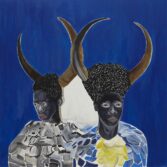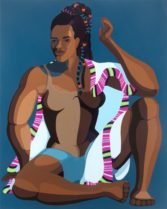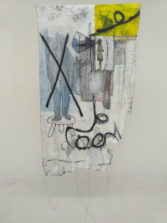
With washy and matte strokes, Muholi portrays herself in allusive physical forms, referencing both Zulu legends and gender disidentification imagery. Still, it is the striking presence, involving an unretractable gaze that infiltrates the viewers’ attention, and which is intrusively compelling.




